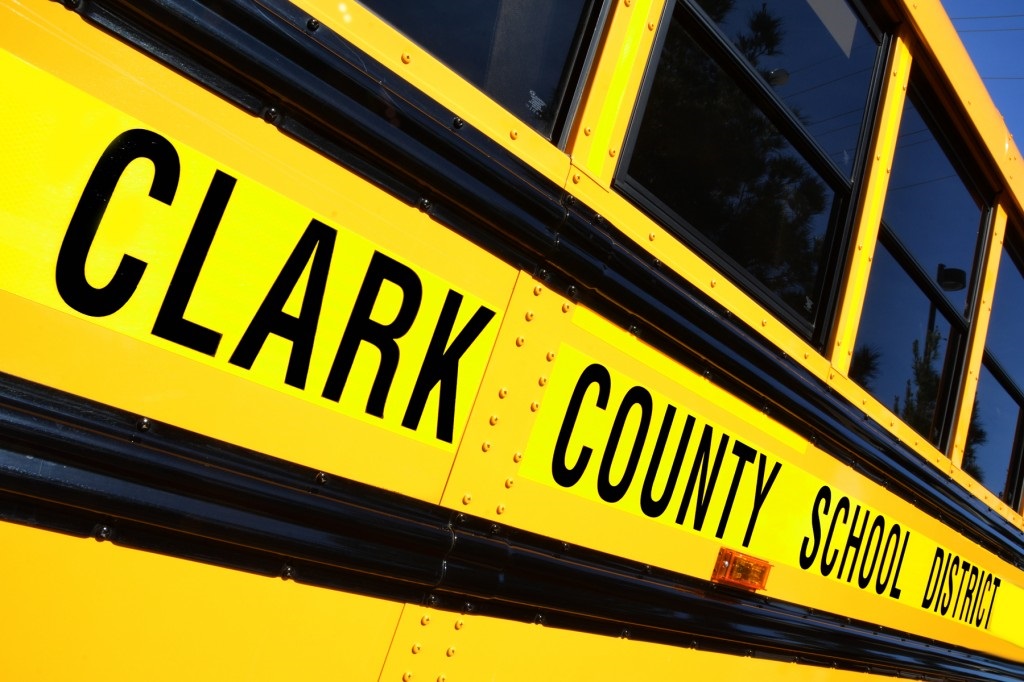As Clark County School District waits to see the effects of yet another round of budget cuts, it’s an apt time to remember one group not affected: the dozens of local charter schools overseen by other entities and not part of the district.
CCSD officials have not been shy about placing some of the blame for its financial woes at the feet of these charter schools, the majority of which are sponsored by the Nevada State Public Charter School Authority. When parents opt to enroll their kids in these charter schools, the public school district loses out on per-pupil funding distributed by the state. That money – roughly $5,700 per student – goes directly from the state to the charter schools.
That’s happening more and more. The state-sponsored charter school population jumped from 13,934 in the 2012-13 school year to 30,756 during the 2016-17 school year. It is expected to continue rising.
The district late last year noted that 1,400 fewer students enrolled for the 2017-18 school year than anticipated, equaling a funding loss of $8 million. That combined with other issues – most prominently a pair of arbitration losses related to salary and benefit increases for its unionized teachers and administrators – have led the district to its current $68 million deficit.
Now it appears to be readying itself to push back against charter schools.
A new marketing position, approved last month as part of the upcoming fiscal year budget, is tasked with developing and directing “the execution of a marketing plan to set consistent brand standards and improve the perception of the District throughout our families and our community.” This could, according to the job posting and chatter among trustees, include using door-to-door flyering and some of the same marketing techniques used by charter schools to lure students away from CCSD. The marketing person will work directly with principals at schools impacted by charter schools who’ve recruited in their areas.
CCSD says it does not currently have a list of which schools those might be.
When Trustee Kevin Childs questioned the six-figure salary attached to the new marketing job, retiring Superintendent Pat Skorkowsky argued the position will “pay for itself” if it brings back 25 students a year. The funding for the position was created by repurposing other department funds, said a spokesperson for the district.
The CCSD communications office also noted in an email to the Current that the job isn’t solely focused on charter schools but “will also oversee most district publications, help develop and talk about the district’s vision plan throughout the community, and work on a larger strategic plan preparing for a successful 2019 Legislative session.”
The position has already been filled by an in-house candidate. CCSD did not give the employee’s name but said the person has “extensive marketing experience in the private sector.”
Trustee Chris Garvey is an outspoken critic of charter schools, calling them “an attack on American history” and the idea that a person can better themselves through true public education. She is adamant more attention needs to be focused on the damaging effects of charter schools on public districts.
Charters tout themselves as public institutions that will enroll any student, but data compiled by the Guinn Center shows students at state-sponsored public charter schools are disproportionately whiter, come from more financially stable families, and are less likely to be English Language Learners than students within the state’s public school districts.
During the 2016-17 school year, 23 percent of students at charters were eligible for free or reduced lunch, compared to 63.6 percent of students within public school districts. Only 5.6 percent of charter students were ELL, compared to 16.7 percent in public schools.
“It’s a way for white flight and making money,” says Garvey.
Special education students make up 8.4 percent of the population at charter schools and 12.6 percent at public school districts. Educating these students is particularly costly to the district, says Garvey, because federal and state funds don’t cover the costs of what the district is legally required to provide.
“We have to start having real conversations about the reality of charter schools and what they’re about, the stresses they put on traditional public education,” says Garvey. “If you’re taking the high flyers and leaving the come-from-poverty-and-violence and educational learning disabilities… If that’s all that’s left… You think we have a budget problem now? Just wait.”
Not surprisingly, charter school advocates feel such anger is misplaced.
Pat Hickey, executive director of the Charter School Association of Nevada, says the funding issue shouldn’t be focused solely on those per-pupil dollars and instead needs to be looked at “in its entirety.” Charter schools may receive per-pupil dollars from the state but they don’t get facilities, maintenance or transportation dollars the same way CCSD does.
“But we say that’s ok,” he says. “That’s part of the bargain. We’re given greater flexibility and freedoms.”
As for charter schools not reflecting the overall population, Hickey says that is a work in progress and points out the demographics are moving toward greater diversity at state-sponsored charter schools. He says people are working to add more of them in North Las Vegas, which earlier this year was classified a “charter-school desert” by The Fordham Institute.
“We appreciate (the district’s) challenges,” said Hickey. “We do. We have our own. All we can do is to make the case that we’re public partners educating the same children in Nevada and going forward we can find creative financing ways.”
Addressing an outdated funding formula at the state level would be a good start, he says. That’s something charters and the public district both agree on.
Hickey says he hopes the new marketing person at CCSD will focus on promoting the district’s magnet and career and technical programs, many of which have been nationally recognized for their achievements and offerings.
On their end, Garvey and others critical of charter schools don’t see why the district can’t do both simultaneously.
Adds Garvey, “We need to be doing that to the same extent that charter schools are.”
Our stories may be republished online or in print under Creative Commons license CC BY-NC-ND 4.0. We ask that you edit only for style or to shorten, provide proper attribution and link to our website. AP and Getty images may not be republished. Please see our republishing guidelines for use of any other photos and graphics.




